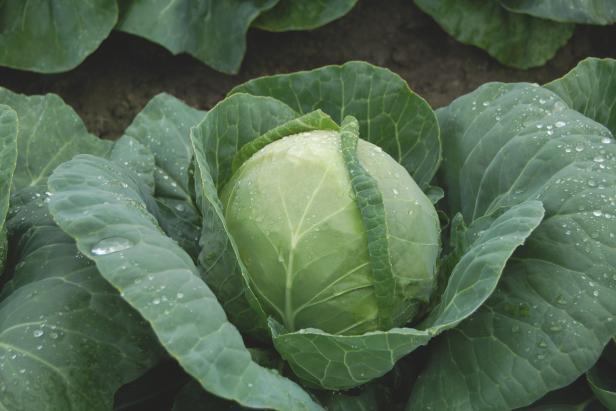Cabbage is one of the most popular vegetables in horticulture. It originated in Europe but is grown around the world today. It is not just high in nutrients but can also be used for medicinal purposes.
The entire plant can be cooked or eaten raw as a salad. This article should help you to learn the basics of growing your own cabbage successfully.
Soil preparation
The soil should be loosened to a depth of between 450 – 600 mm before planting. Fumigate the soil at least two weeks before planting to get rid of nematodes (microscopic worms that attack then root system and damage the plants). Cabbage can be planted from January to May and can be harvested about 70 days after planting depending on the type of cabbage and other conditions.
Planting
Cabbage seeds can be planted directly in the soil, or in seedbeds to make seedlings. Seedlings should be transplanted about two weeks after germination as soon as they reach the desired size. Only the biggest and strongest seedlings should be used. Transplanting is done in moist soil. The soil around the roots should be firmed and irrigated as soon as possible after putting the seedlings. In wet areas, cabbage should be planted on raised beds or ridges to reduce waterlog ging and stem or root rot diseases. Large-headed cultivars should be planted 600 to 700 mm apart between rows and 450 mm apart in the rows. Smaller-headed varieties are planted 600 mm apart between rows and 300 mm in the rows.
Fertilisation
Fertilising programs should be based on the soil conditions of your farm. Contact your local cooperative or fertiliser agent to get the best advice. Cabbage requires Nitrogen to be put into the soil before planting. Be very careful when you apply fertiliser after the plants have germinated. Fertilisers should never be allowed to lie on the plant because it will burn the plants and ruin them. It is safer to apply Nitrogen to the soil close to the plant roots, but never as a top dressing.
Irrigation
Cabbage should be irrigated immediately after sowing or transplanting. Thereafter, irrigation should be applied at intervals of 10 to 12 days in heavy soils or 8 days in light soils and the schedule should be followed until the heads are fully developed and firm. Young plants should receive enough water, but too much water can easily cause trouble. Make sure that the soil is moist, but the plants should not stand in puddles of water.
Pest and disease control
The most common pests that target cabbage are Aphids (several types), diamondback moth, Bagrada bug, American bollworm, cabbage webworm, greater cabbage moth, red spider mite, cutworms, Plusia looper, thrips, and nematodes. Control can be achieved by practising crop rotation. Always try to keep the field clean and free of weeds, which can act as hosts for many pests. Frequent diseases include damping off, Sclerotonia rot (or white mould), clubroot, Fusarium wilt or cabbage yellows, blackleg, downy mildew, black rot and bacterial and leafspot.
Control can be achieved through chemical means, planting tolerant or resistant cultivars, using disease-free seed or seed treated with hot water, practising crop rotation, avoiding the use of sprinkler irrigation, increasing the interval between irrigation, treating the seedbed with fungicides, spacing seedbeds far from old production fields, destroying seedbeds if leaf lesions are found and removing all cabbage material remaining in seedbeds.
Source: South African Department of Agriculture, Forestry and Fisheries









